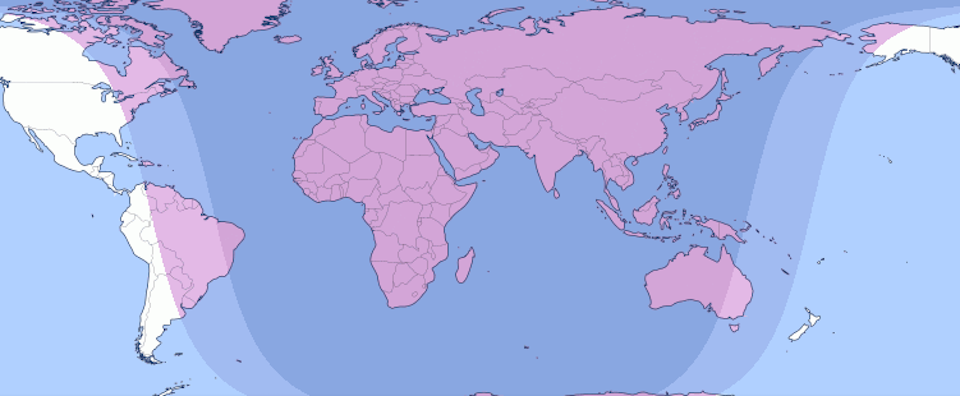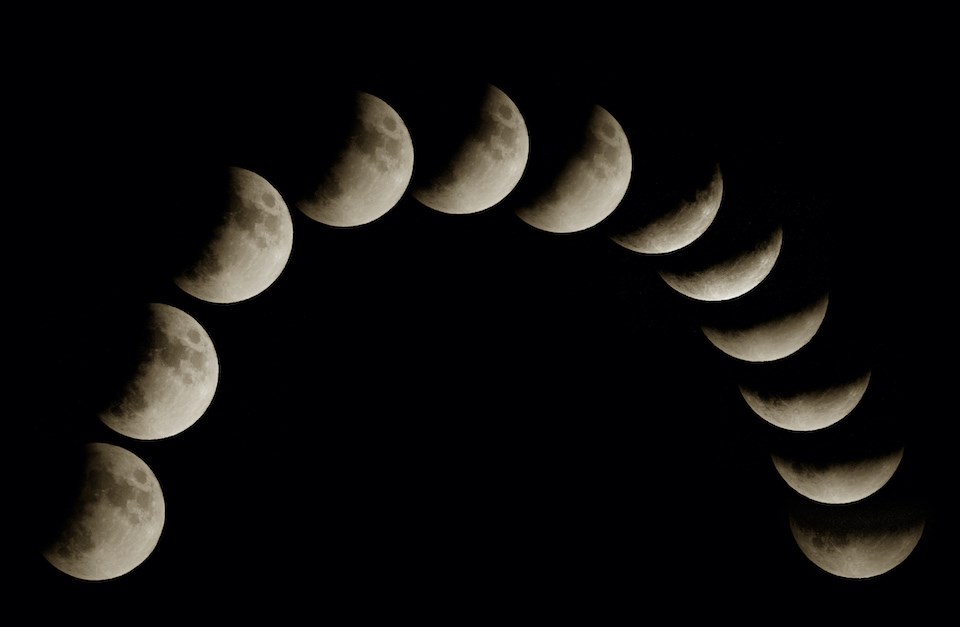Skywatchers have several reasons to celebrate the month of October in Metro Vancouver.
While longer, dark nights are generally better for observing celestial events, the spooky month also offers a couple of uncommon ones that you won't want to miss.
Locals should mark their calendars for the annular solar eclipse on Oct. 14 that will make the sun appear like a ring of fire with a black disk.
During the rare event, the moon moves between the sun and Earth and the display will be visible in parts of the United States, Mexico, and many countries in South and Central America, according to NASA.
The eclipse is considered "annular" because the moon will be at its farthest point from Earth, making it appear smaller than the sun. Since the moon is farther away, it won't completely block the light from the bright star.
The full moon in October, commonly known as the full "hunter" moon, will rise in Metro Vancouver roughly a week after the annular solar eclipse, on Oct. 28. It will also coincide with a partial lunar eclipse.
Will I be able to view the partial lunar eclipse in Metro Vancouver?
Unfortunately, residents of the Lower Mainland won't be treated to a second eclipse in October. While the full moon coincides with the partial lunar eclipse, Western North America is one of the few places on Earth that won't have a view of the event.
A map of the world shows that all the places on Earth that will get a view of the partial lunar eclipse include everywhere except most of North America and roughly half of South America, according to timeandate.com

The Metro Vancouver weather forecast includes two meteor showers
Locals won't be able to see a lunar eclipse, but they will have multiple chances to wish upon a star.
Two meteor showers are viewable from the Lower Mainland in October. The first, the Draconid meteor shower, will peak around Oct. 8. However, the second one, the Orionids meteor shower, puts on a more impressive display.
The productive shower will "rain down" shooting stars sometime between Oct. 21 and Oct. 22, in a "moonless sky," allowing for ideal viewing conditions, according to Earthsky.
The American Meteorological Society notes that the shower can sometimes reach "high strength activity," putting it on par with the Perseid meteor shower (one of the brightest showers of the year). On average, the Orionids produce roughly 10 to 20 shooting stars but in exceptional years they may produce up to 50 to 75 per hour.
Before you head out for a star-gazing session, have a look at the weather forecast in your local neighbourhood. Perhaps surprisingly, the weather can vary drastically from one area to another, meaning that you'll want to know exactly what to expect in the place you head out to. Weatherhood provides specific data for dozens of neighbourhoods across the Lower Mainland.
Skywatchers eager to gaze at the annular solar eclipse should exercise extreme caution. It can't be viewed with the naked eye and viewing it through a camera lens will cause immediate, severe damage. Use solar viewing glasses (eclipse glasses) or a safe handheld solar viewer.



